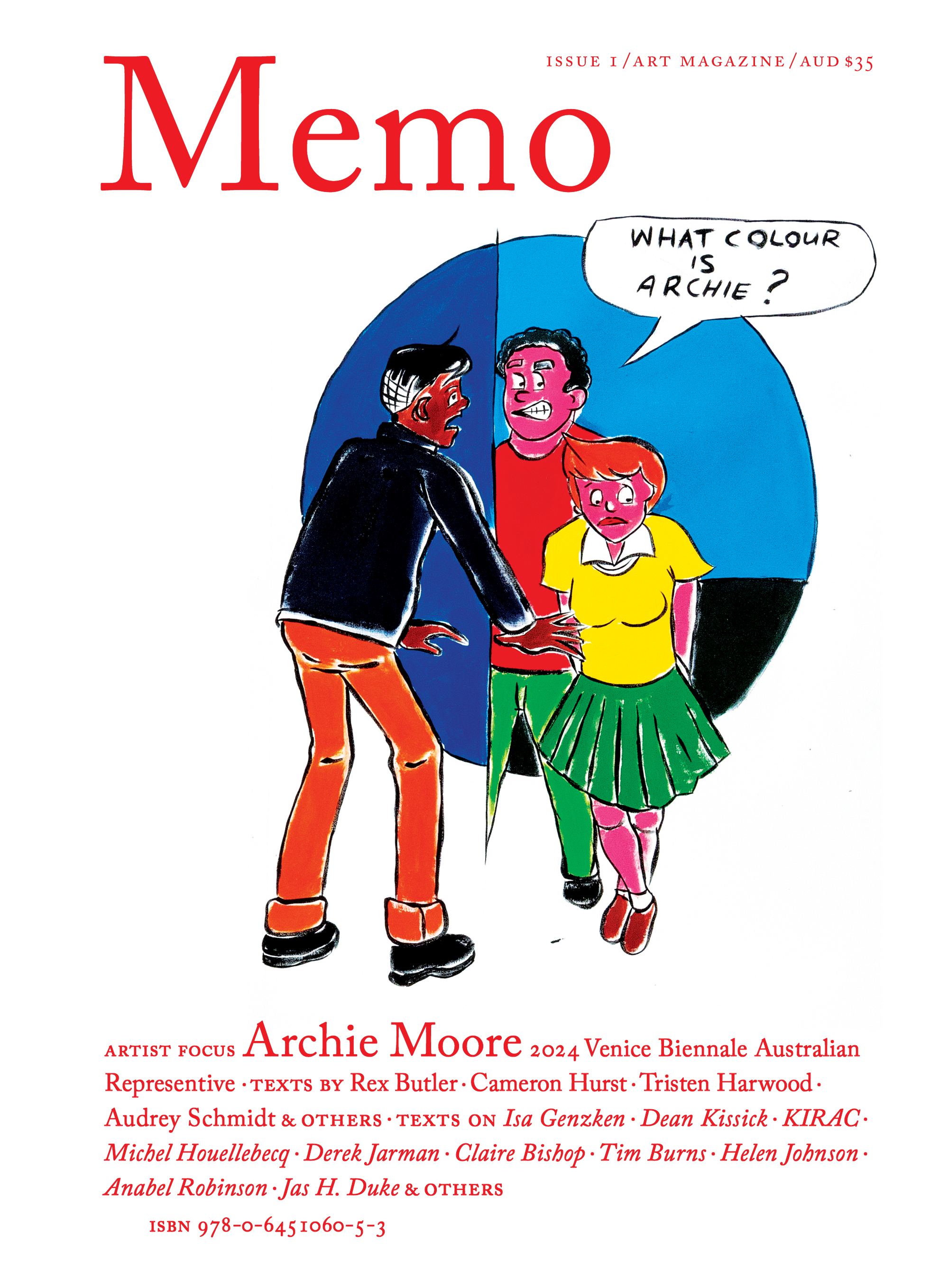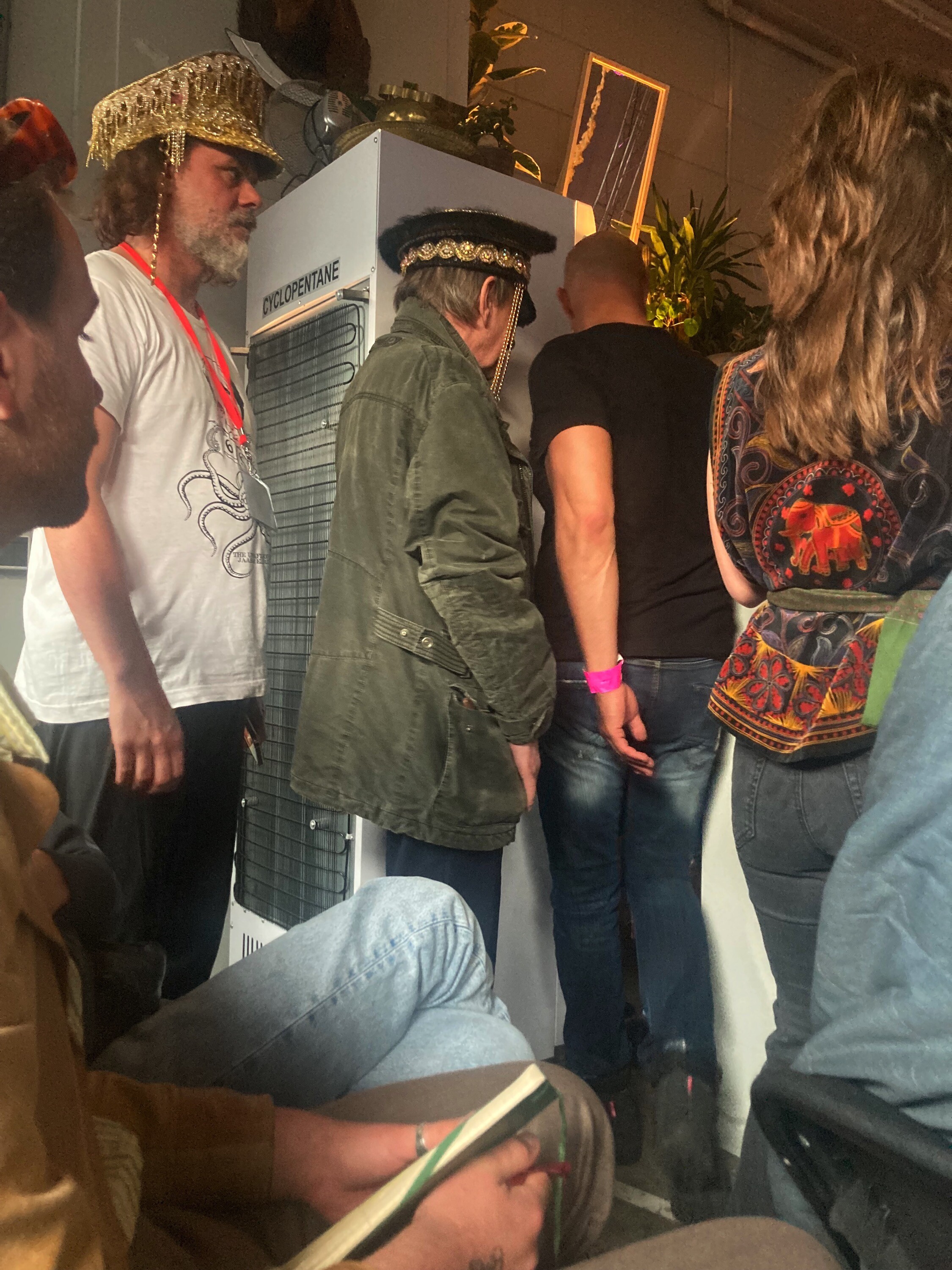The Impoverished Aesthetic: Class, Race, and Depression in the Work of Archie Moore
Archie Moore’s “impoverished aesthetic” transforms memory, class, and race into immersive, unsettling worlds. Rejecting the tidy self-disclosure of trauma narratives, his work lingers in ambiguity—neither confession nor critique, but something in between.
By Tara Heffernan
Issue 1, Summer 2023/24
“Paying your respects costs you nothing,” wryly notes a t-shirt designed by Archie Moore. In Australia, well-meaning attempts to address colonial culpability and bear witness to its legacies often paradoxically serve as cathartic rituals, assuaging the white guilt of a predominantly middle-class audience. Along with bureaucratised expressions of remorse, key among these symbolic reparations is the excessive platforming of trauma narratives. Premised on a foundational contradiction — the externalisation of inner turmoil — these politicised acts of self-disclosure are routinely encouraged, only to be mined for ideological edification.
Exclusive to the Magazine
The Impoverished Aesthetic: Class, Race, and Depression in the Work of Archie Moore by Tara Heffernan is featured in full in Issue 1 of Memo magazine.
Get your hands on the print edition through our online shop or save up to 20% and get free domestic shipping with a subscription.
Related
KIRAC’s gonzo filmmaking shatters art world niceties, but their entanglement with Michel Houellebecq—novelist, provocateur, reluctant porn star—turns chaotic. As lawsuits fly and reputations fray, the real spectacle isn’t the film itself but the battle over who gets to tell the story.
From Rhode Island School of Design‘s anti-commercial posturing to Gagosian’s prismatic salons, this fictional Anna Weyant chronicle exposes the brutal mechanics of ambition in contemporary art.


